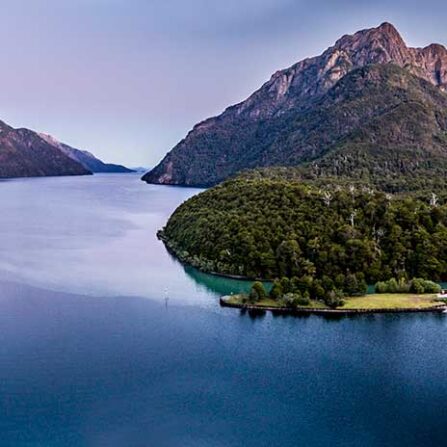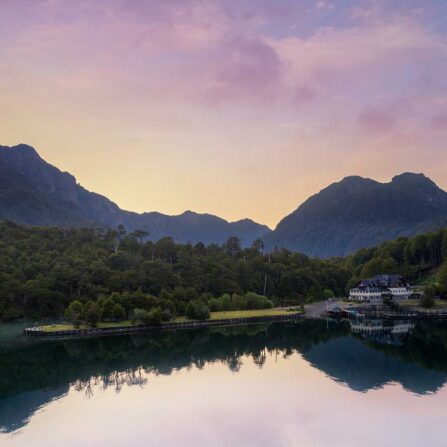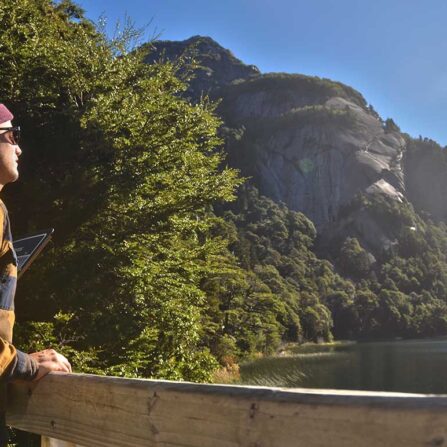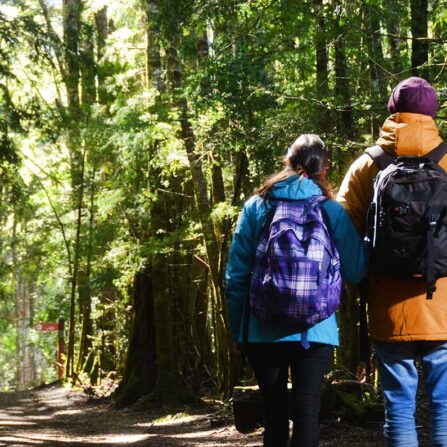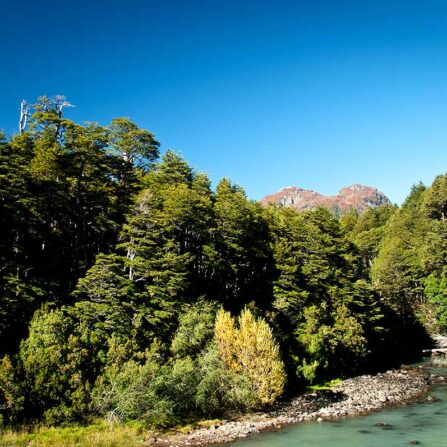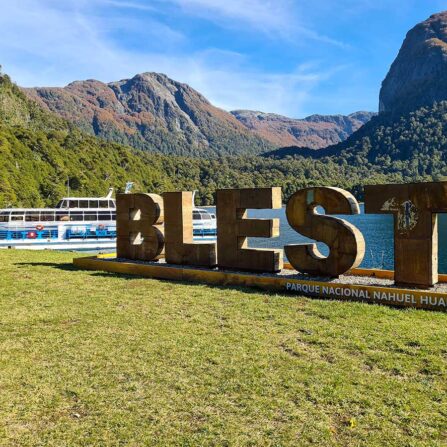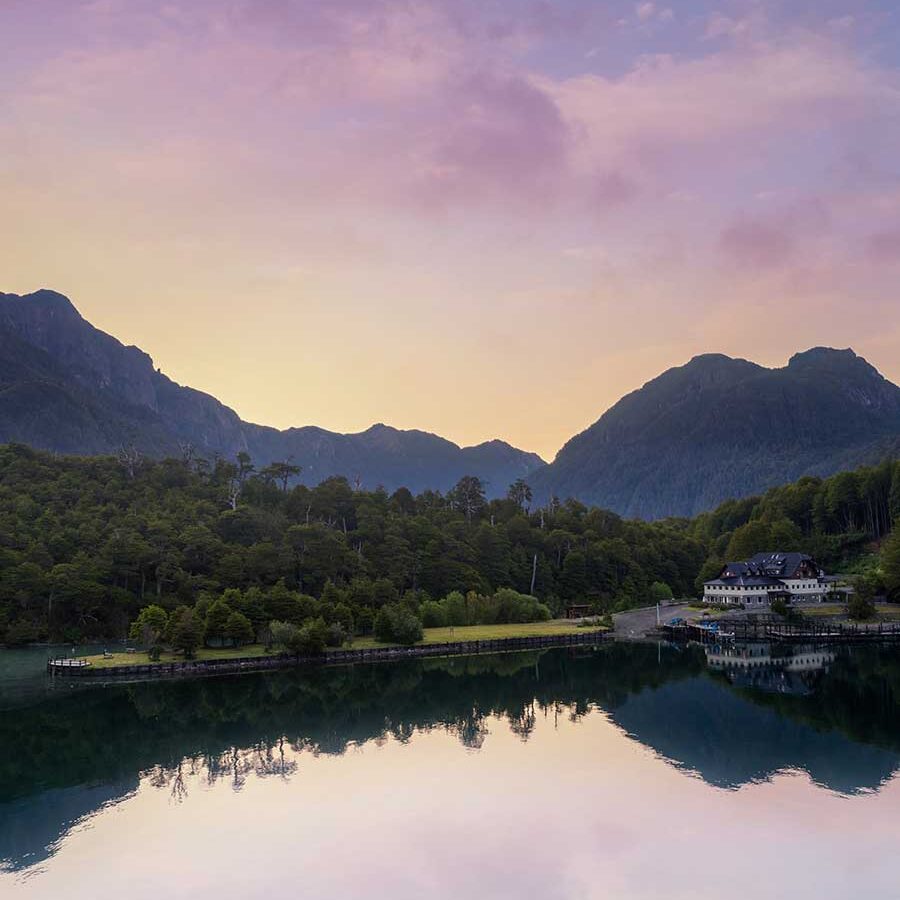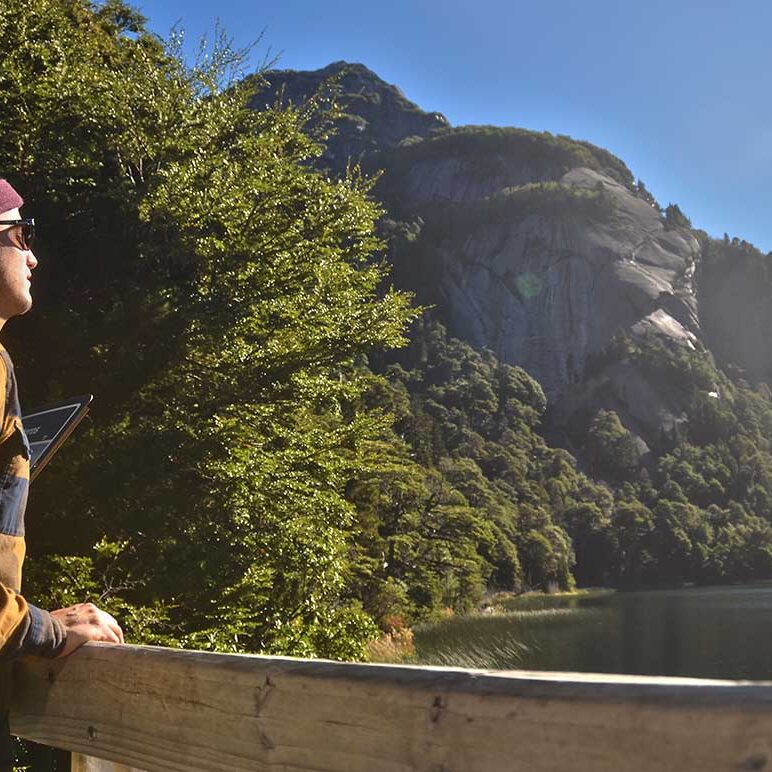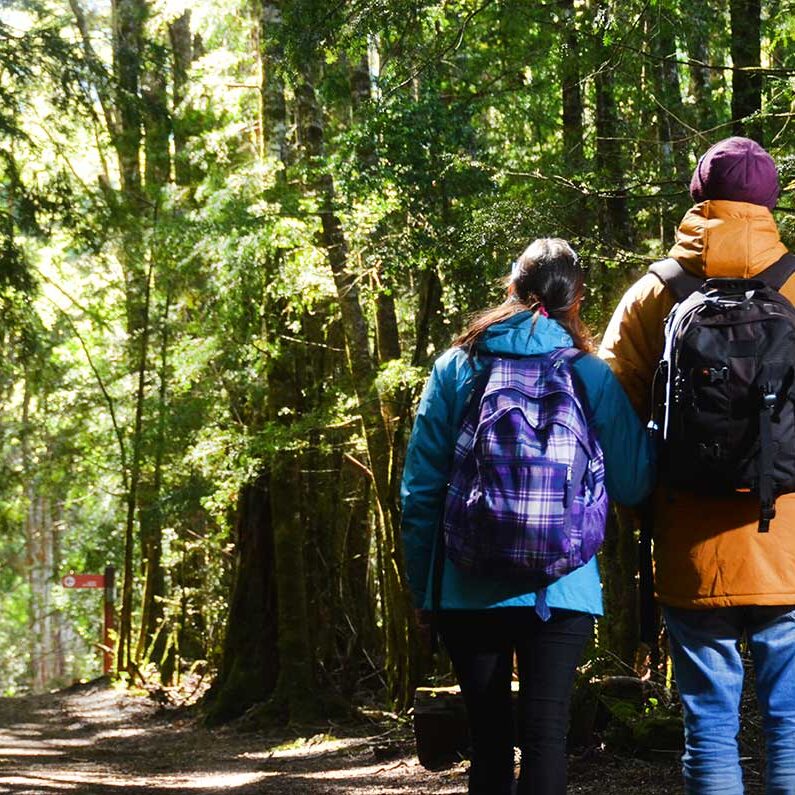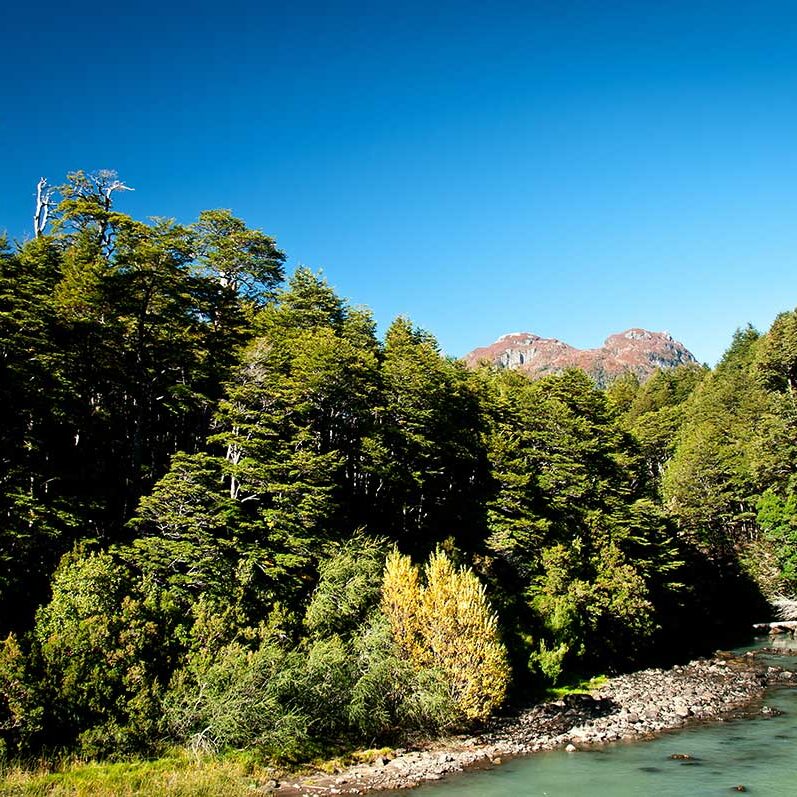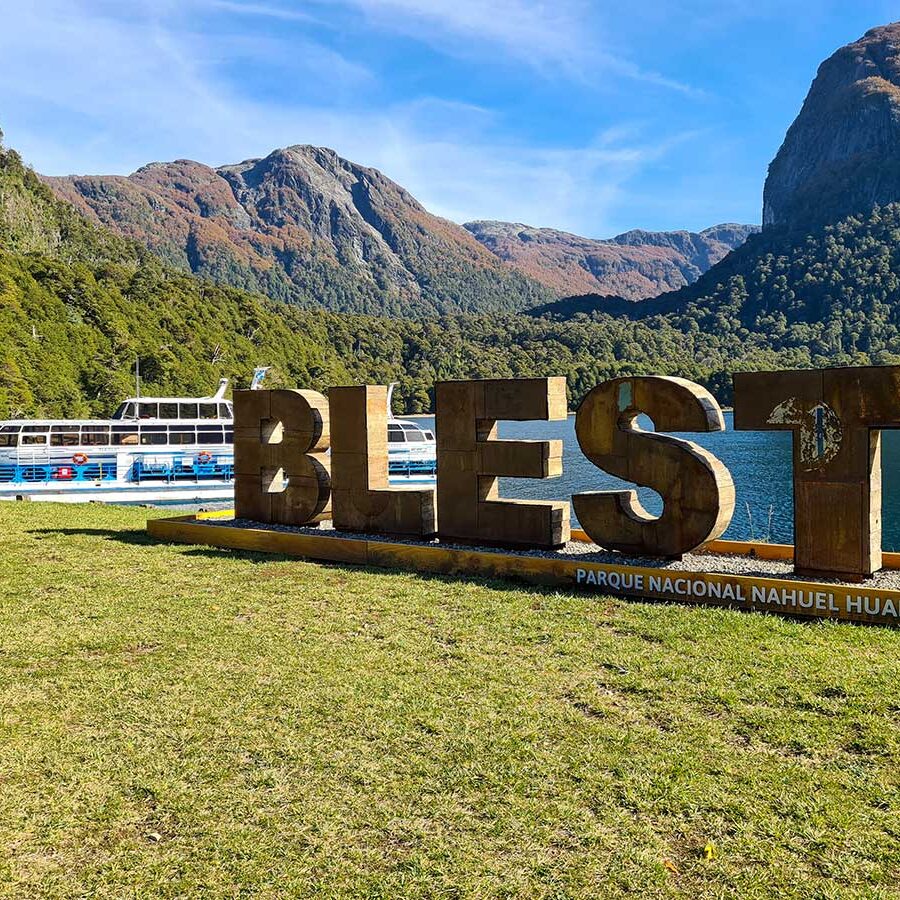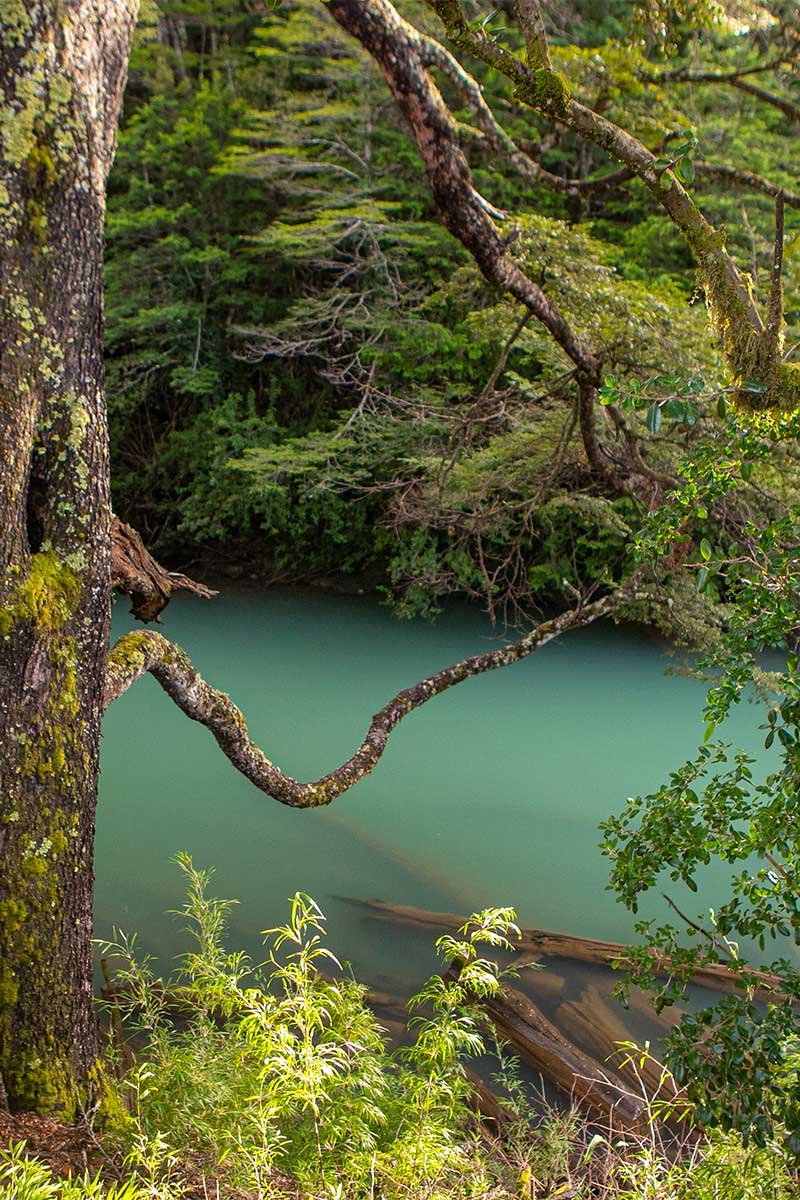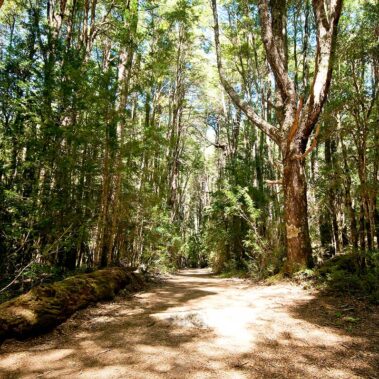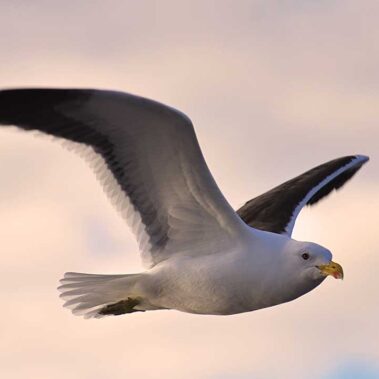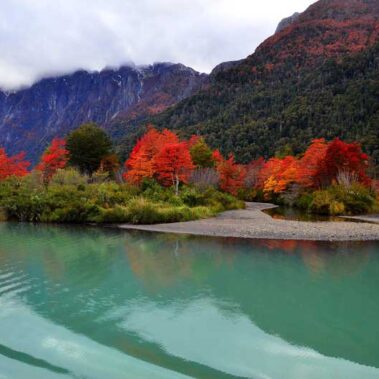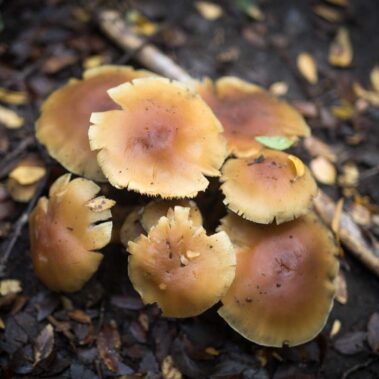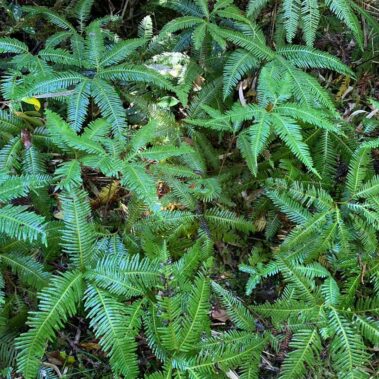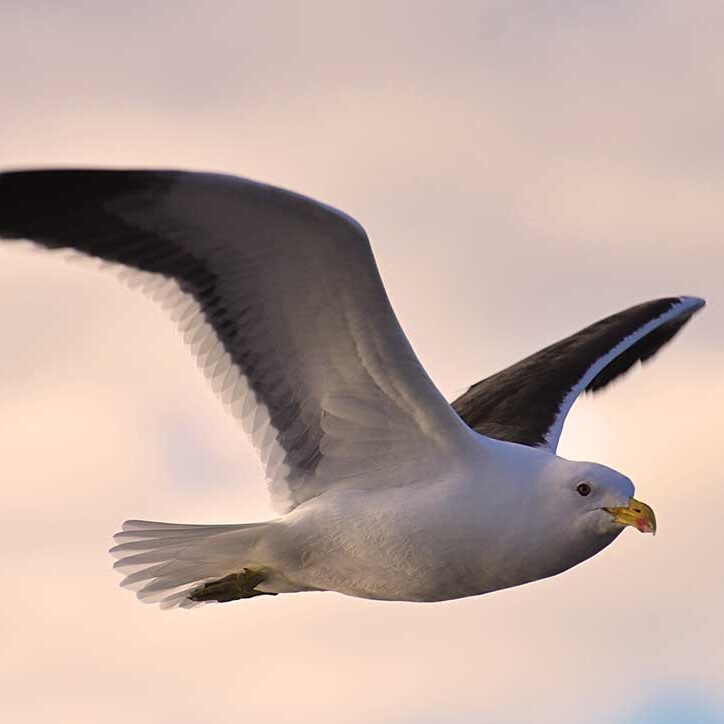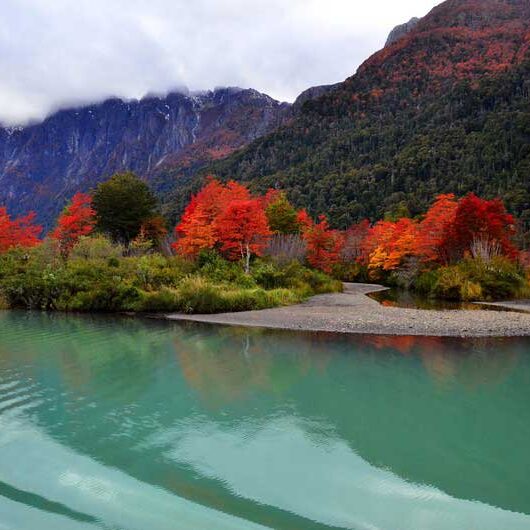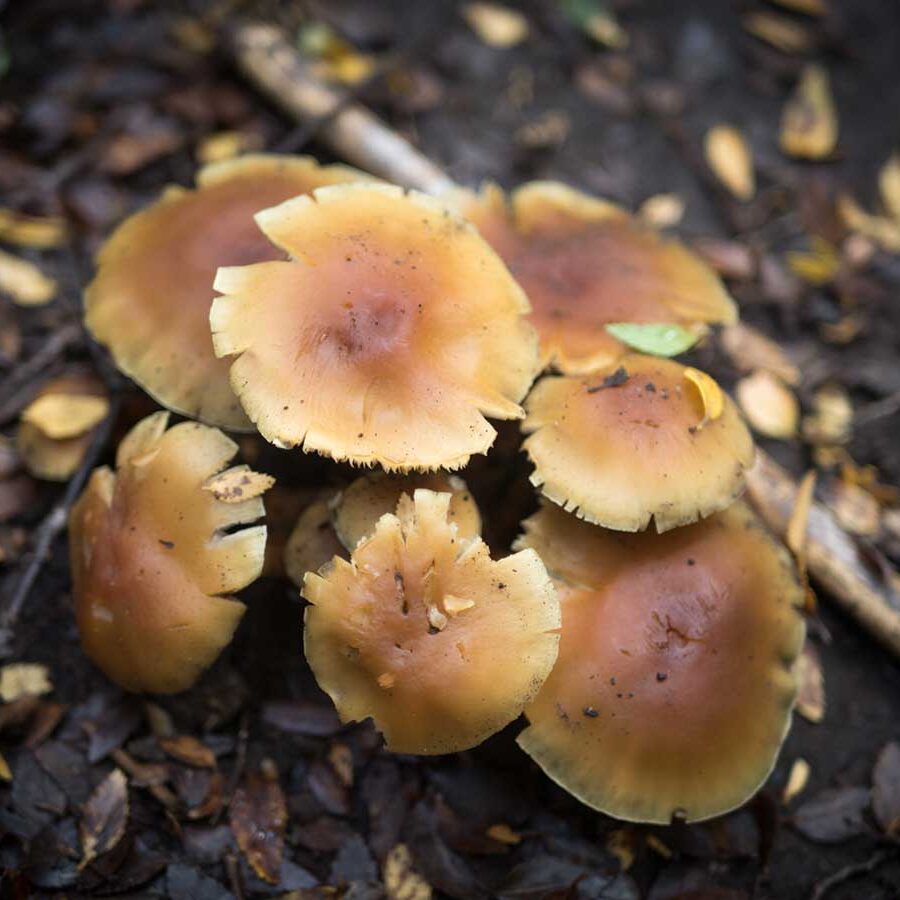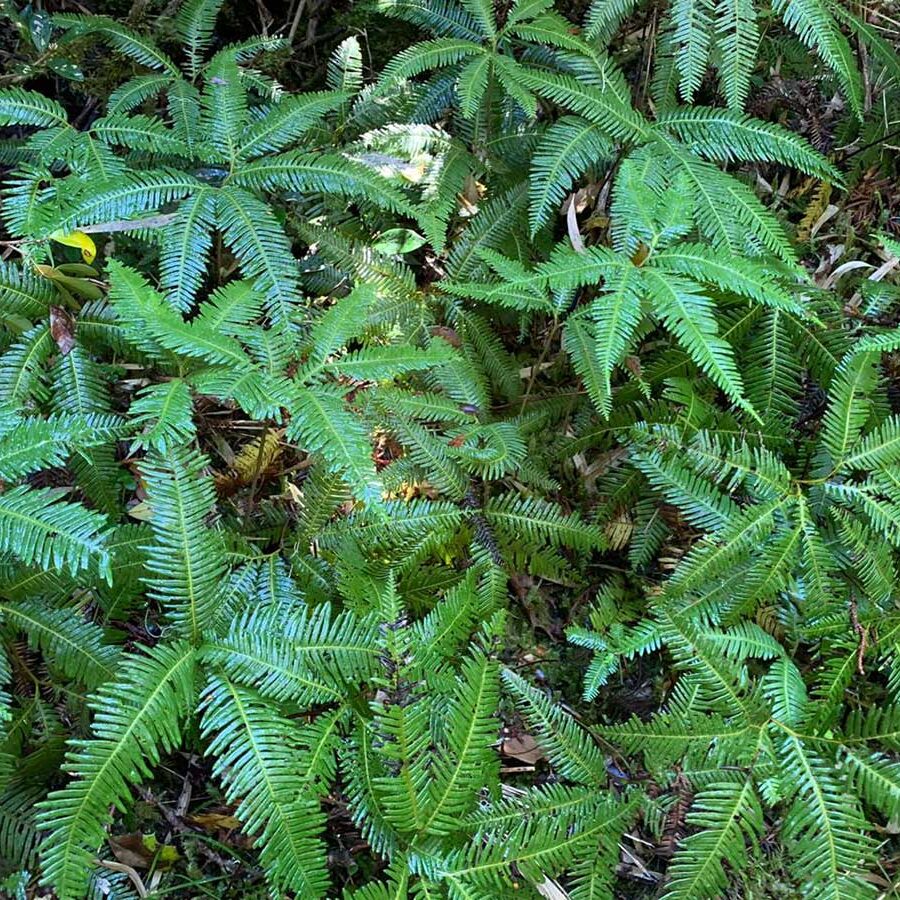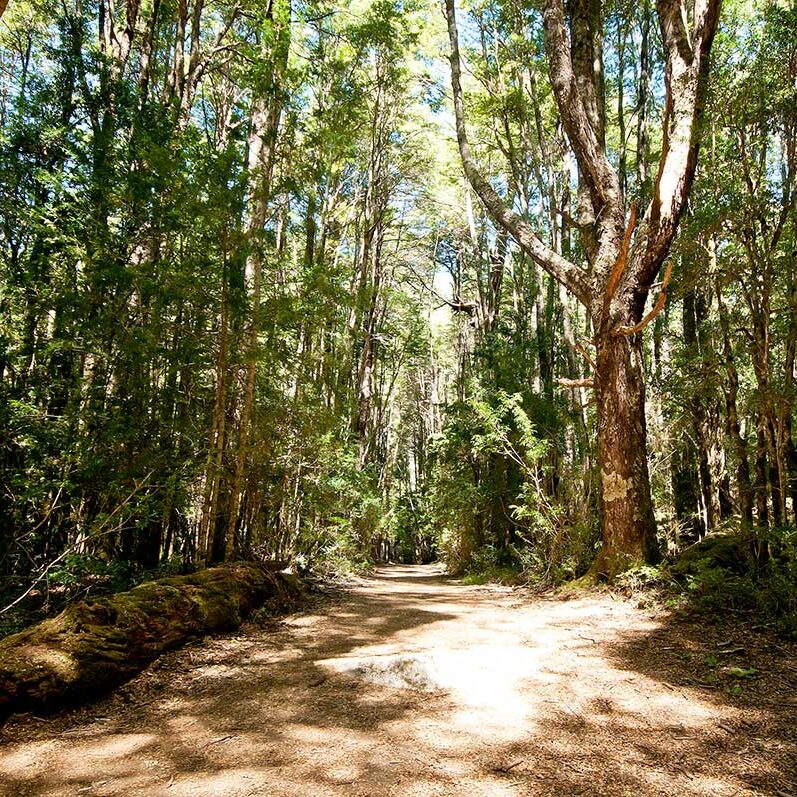Native trees predominate in this region such as Coihue, Andean Larch, Guaytecas Cypress among others, and from 900 meters above sea level Lengas grow on the slopes of the hills that turn reddish in autumn.
The Valdivian Rainforest is a variety of primary forest, where terrestrial life originated and is considered an example of a pure forest.
But why is there a Cold Jungle in this place? The region has a temperate-rainy oceanic climate, with very abundant rainfall that reaches 3000 mm per year. This point is the rainiest in Argentina. The average of the rainy days is about 270 of the 365 a year and the driest season is the summer, between December and March.
About the fauna, the area of Puerto Blest has Huillines, the emblematic species of the Nahuel Huapi National Park. This species together with the huemul are in danger of extinction.
Other species of special value are the imperial cormorant, mountain monkey, torrent duck, condor, puma, pudu, huiña cat, guanaco, small gray fox and several species of amphibians.
Puerto Blest is also characterized by having a very high diversity of birds. The chucao, Patagonian thrush, condor, torrent duck and the ruby hummingbird, among others, are very abundant.


